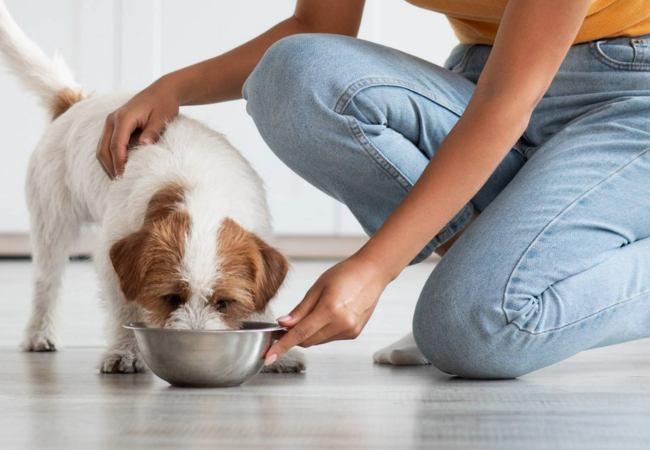Best Feeding Method for Dogs in 2025: A Vet’s Guide 🍽️🐾

In this article
Best Feeding Method for Dogs in 2025: A Vet’s Guide 🍽️🐾
By Dr. Duncan Houston BVSc
1. Free‑Feeding vs. Scheduled Meals
Free‑feeding (food always available) can lead to overeating, obesity, and difficulty tracking appetite changes.
Scheduled feeding—typically two meals per day for adults—allows for portion control, weight monitoring, and better digestive predictability.
2. Ideal Meal Frequency by Age & Lifestyle
- Puppies: 3–4 meals/day until 6 months, then transition to 2–3.
- Adults: 1–2 meals/day; current research even links once-a-day feeding to reduced disease incidence—but consistency and vet advice are vital.
- Seniors: Typically 2 meals/day; some may benefit from smaller, more frequent feeds; always align with health needs.
- Active or working dogs: 2–3 meals/day to sustain energy levels.
3. Portion Control & Calorie Monitoring
Begin with feeding-chart guidelines on your food label or calorie calculators. Adjust portion based on your dog's ideal weight and body condition score—fine-tune as needed.
4. Combining Wet & Dry Food
Mixing wet and dry food offers the hydration benefits and palatability of wet food, while maintaining the convenience and dental advantages of kibble. Just monitor total caloric intake.
5. Addressing Fast Eaters & Bloat Risk
Rapid eating increases bloat and choking risk. Use slow-feed bowls, puzzle toys, or scatter feeding to slow consumption and encourage mental engagement.
6. Best Timing of Meals
Feed adults morning and early evening—ideally 10–12 hours apart. Puppies and seniors may benefit from more frequent small meals.
7. Monitoring & Adjusting
Track appetite, stool consistency, coat health, and energy daily. A sudden change in appetite can indicate illness. Adjust portions and meal frequency as needed—or seek vet guidance.
8. Hydration & Diet Quality
Ensure water is always available, especially with dry food-only diets. Choose AAFCO-complete diets and adjust for life stage and activity.
9. Vet-Approved Customization
Each dog is unique. Work with your vet to tailor feeding plans: consider body condition, health conditions (e.g., diabetes, GI disorders), and lifestyle. Reassess annually.
10. Ask A Vet Tools & Support
- 📱 **Ask A Vet App** – calorie calculators, feeding schedules, and appetite changes support.
- 🎓 Nutrition Webinars – learn meal planning, bloat prevention, and proper hydration.
- 🛠️ Woopf & Purrz Feeding Kits™ – includes portion cups, slow-feed bowls, and timed feeders.
11. Final Takeaway
In 2025, the best feeding method is personalized: scheduled meals, tailored frequency, balanced portions, and hydration. Mix formats if needed, use enrichment tools to slow eaters, and monitor health closely. Partner with your vet to adjust as your dog ages, stays active, or faces health changes—ensuring meals are a source of fuel, comfort, and joy 🐾❤️.
Need a feeding plan tailored to your pup? Visit AskAVet.com or download our app for expert guidance and tracking tools.






